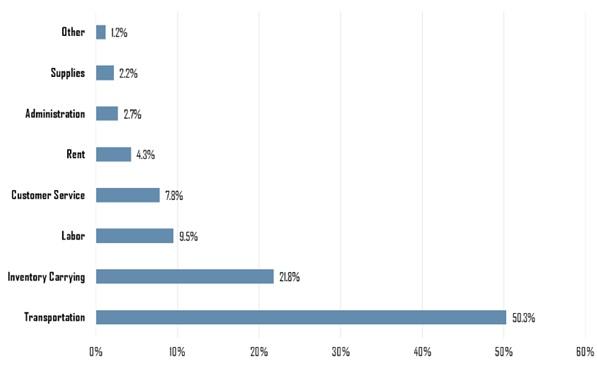In the fast-paced world of global trade and commerce, the seamless movement of goods from one place to another is crucial for the success of businesses. This intricate web of transportation, storage, and distribution is known as logistics. However, behind the scenes of this complex operation lie significant costs that can make or break a company’s bottom line. From warehousing fees to shipping expenses, navigating the world of logistics costs requires finesse and strategic planning. Join us as we delve into the world of logistics costs, exploring the challenges and opportunities that come with managing the flow of goods in today’s interconnected economy.
Understanding the Impact of Logistics Costs on Business Operations
Logistics costs play a crucial role in shaping the overall success of a company’s business operations. From the transportation of goods to the storage and distribution process, every aspect of logistics incurs a cost that directly impacts the bottom line. Understanding the various factors that contribute to logistics costs can help businesses optimize their operations and improve their profitability.
Transportation expenses, fuel costs, inventory management, and warehousing fees are just a few examples of logistics costs that businesses need to consider. By analyzing these costs and implementing efficient strategies, companies can streamline their supply chain processes, enhance customer satisfaction, and gain a competitive edge in the market. It is essential for businesses to evaluate their logistics costs regularly and identify areas for improvement to ensure sustainable growth and success.

Optimizing Transport Efficiency to Reduce Logistics Expenses
One key strategy for reducing logistics expenses is to focus on optimizing transport efficiency. By carefully planning and managing transportation operations, companies can streamline their supply chain processes and lower overall costs. Utilizing the right transportation modes, routes, and carriers can lead to significant savings in both time and money.
Implementing technology solutions, such as transportation management systems (TMS) and route optimization software, can help companies make data-driven decisions that improve transport efficiency. Additionally, consolidating shipments, utilizing intermodal transportation, and implementing sustainable practices can further enhance cost savings while reducing environmental impact. By consistently evaluating and refining transportation processes, companies can achieve greater efficiency and profitability in their logistics operations.

Implementing Innovations in Shipping Practices for Cost-Effective Logistics Solutions
When it comes to , it’s important to stay ahead of the curve in a constantly evolving industry. Embracing new technologies and strategies can help streamline shipping processes, optimize routes, and ultimately reduce costs for businesses. By leveraging real-time tracking systems, route optimization software, and automated inventory management, companies can achieve greater efficiency and savings in their logistics operations.
Additionally, exploring alternative modes of transportation, such as intermodal shipping and freight consolidation, can further drive down logistics costs. Collaborating with logistics partners and suppliers to share resources and infrastructure can also lead to more economical shipping solutions. By continually evaluating and adapting shipping practices, businesses can stay competitive in a fast-paced global market while keeping costs in check.
Future Outlook
In conclusion, understanding and managing logistics costs is crucial for businesses to ensure smooth operations and maximize profitability. By optimizing transportation, shipping, and other aspects of logistics, companies can improve efficiency, reduce expenses, and ultimately enhance their bottom line. With proper planning and strategies in place, businesses can navigate the complex world of logistics with confidence and achieve success in the competitive global market. Keep exploring innovative solutions and stay ahead of the curve to meet the ever-changing demands of the supply chain industry. Thank you for reading!
